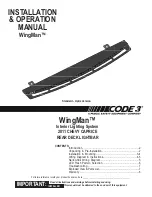
procedure is calculated, e.g. overhanging
loads, tail sections or loading ramps of goods
vehicles. In some circumstances, Active Park-
ing Assist may therefore guide you into the
parking space too early. This may lead to a
collision. For this reason, you should avoid
using Active Parking Assist in such situations.
G
WARNING
The front of the vehicle will veer out in the
direction of the oncoming traffic during the
parking operation. In some cases the vehicle
will also take you onto sections of the oncom-
ing lane during the parking procedure.
You are responsible for safety at all times and
must pay attention to any road users
approaching or passing. Stop the vehicle if
necessary or cancel the Active Parking Assist
parking procedure.
G
WARNING
Make sure that no persons or animals are in
the manoeuvring range. Otherwise, they
could be injured.
Use Active Parking Assist for parking spaces:
R
that are parallel to the direction of travel
R
that are on straight roads, not bends
R
that are on the same level as the road, e.g.
not on the pavement
Parking tips:
R
on narrow roads, drive as closely as possi-
ble past the parking space.
R
parking spaces that are littered, overgrown
or partially occupied by trailer drawbars
might be identified incorrectly or not at all.
R
snowfall or heavy rain may lead to a parking
space being measured inaccurately.
R
pay attention to the PARKTRONIC
(
Y
page 189) warning messages during the
parking procedure.
R
at any time, you can intervene in the steer-
ing procedure to correct it. Active Parking
Assist will then be cancelled.
R
when transporting a load which protrudes
from your vehicle, you should not use
Active Parking Assist.
R
when snow chains or an emergency spare
wheel are fitted, you should not use Active
Parking Assist here either.
R
make sure that the tyre pressures are
always correct. This has a direct influence
on the parking characteristics of the vehi-
cle.
R
the way your vehicle is positioned in the
parking space after parking is dependent
on various factors. These include the posi-
tion and shape of the vehicles parked in
front and behind it and the conditions of the
location. It may be the case that Active
Parking Assist guides you too far into a
parking space, or not far enough into it. In
some cases, it may also lead you across or
onto the kerb. If necessary, you should can-
cel the parking procedure with Active Park-
ing Assist.
R
you can also engage forward gear prema-
turely. The vehicle redirects and does not
drive as far into the parking space. Should
a gear be changed too early to achieve a
sensible parking position, the parking pro-
cedure will be cancelled.
!
If unavoidable, you should drive over
obstacles such as kerbs slowly and not at
a sharp angle. Otherwise, you may damage
the wheels or tyres.
Detecting parking spaces
Active Parking Assist is switched on automat-
ically when driving forwards. The system is
operational at speeds of up to approximately
35 km/h. While in operation, the system inde-
pendently locates and measures parking
spaces on both sides of the vehicle. When
driving at speeds below 30 km/h, you will see
parking symbol as a status indicator in the
instrument cluster. Active Parking Assist only
displays parking spaces on the front-
passenger side as standard. Parking spaces
on the driver's side are displayed as soon as
Driving systems
193
Driv
ing
and
pa
rk
ing
Z
Summary of Contents for GLK 300 4MATIC 2012
Page 2: ......
Page 3: ......
Page 5: ......
Page 77: ...74...
Page 111: ...108...
Page 129: ...126...
Page 147: ...144...
Page 225: ...222...
Page 314: ...Useful information 312 Service 312 Engine compartment 313 Care 317 311 Maintenance and care...
Page 327: ...324...
Page 363: ...360...
Page 379: ...376...
Page 380: ......
Page 381: ......
















































